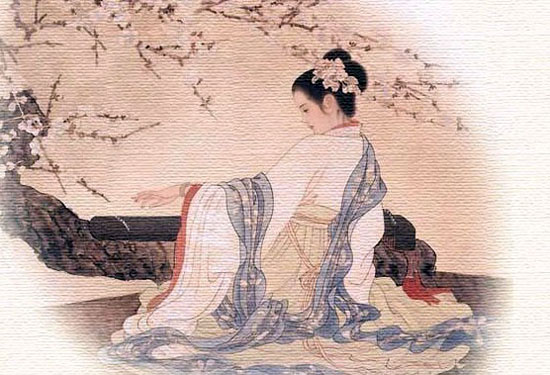OBJECTIVE:
To observed efficacy differences of acupuncture at Zusanli (ST 36) in rats with Asthma and asthma with spleen-deficency, so as to investigate the therapeutic mechanism.
To observed efficacy differences of acupuncture at Zusanli (ST 36) in rats with Asthma and asthma with spleen-deficency, so as to investigate the therapeutic mechanism.
METHODS:
Sixty SD rats were randomly divided into 5 groups according to their weight, named as an asthma with spleen-deficency group (group A), an acupuncture on asthma with spleen-deficency group (group B), an asthma group (group C), an acupuncture on asthma group (group D) and a control group. The rat models with spleen-deficiency in the first two groups were set up by TCM, then the rats of asthma model in the first four groups were induced by egg albumin, but the control group was treated by the same dose of saline. The group B and the group D were both treated with acupuncture at "Zusanli" (ST 36), once each day for 8 days, and the other groups remained unhandled. The mRNA expressions of Fas and Bcl-2 in the lung tissues were detected by hybridization in situ and apoptosis was detected by TUNEL (terminal dexynucleotidyl transferase-mediated dutp nick end labeling).
Sixty SD rats were randomly divided into 5 groups according to their weight, named as an asthma with spleen-deficency group (group A), an acupuncture on asthma with spleen-deficency group (group B), an asthma group (group C), an acupuncture on asthma group (group D) and a control group. The rat models with spleen-deficiency in the first two groups were set up by TCM, then the rats of asthma model in the first four groups were induced by egg albumin, but the control group was treated by the same dose of saline. The group B and the group D were both treated with acupuncture at "Zusanli" (ST 36), once each day for 8 days, and the other groups remained unhandled. The mRNA expressions of Fas and Bcl-2 in the lung tissues were detected by hybridization in situ and apoptosis was detected by TUNEL (terminal dexynucleotidyl transferase-mediated dutp nick end labeling).
RESULTS:
Compared with the control group, in both the group A and the group C, the expression of Fas mRNA significantly decreased, but the expression of Bcl-2 mRNA significantly increased (all P < 0.01), and eosinophils (EOS) counts significantly increased, but EOS apoptosis rate significantly decreased (all P < 0.01). Compared with the group C, in the group A, the expressions of Fas mRNA significantly decreased, but the expressions of Bcl-2 mRNA and EOS counts significantly increased (all P < 0.01). At the same time, compared with the corresponding asthma groups, in both acupuncture groups, Fas mRNA expression obviously increased, Bcl-2 mRNA expression was significantly reduced (all P < 0.01), EOS counts remarkably decreased and EOS apoptosis rate significantly increased (all P < 0.01). There were no significant differences in the expressions of Fas mRNA and Bcl-2 mRNA between the two acupuncture groups (both P > 0.05), but compared with group B,in the group D, EOS counts significantly decreased and EOS apoptosis rate significantly increased (both P < 0.01).
Compared with the control group, in both the group A and the group C, the expression of Fas mRNA significantly decreased, but the expression of Bcl-2 mRNA significantly increased (all P < 0.01), and eosinophils (EOS) counts significantly increased, but EOS apoptosis rate significantly decreased (all P < 0.01). Compared with the group C, in the group A, the expressions of Fas mRNA significantly decreased, but the expressions of Bcl-2 mRNA and EOS counts significantly increased (all P < 0.01). At the same time, compared with the corresponding asthma groups, in both acupuncture groups, Fas mRNA expression obviously increased, Bcl-2 mRNA expression was significantly reduced (all P < 0.01), EOS counts remarkably decreased and EOS apoptosis rate significantly increased (all P < 0.01). There were no significant differences in the expressions of Fas mRNA and Bcl-2 mRNA between the two acupuncture groups (both P > 0.05), but compared with group B,in the group D, EOS counts significantly decreased and EOS apoptosis rate significantly increased (both P < 0.01).
CONCLUSION:
Acupuncture at Zusanli (ST 36) can regulate the disorders of Fas mRNA and Bcl-2 mRNA expression in the state of both asthma and asthma with spleen-deficency, promote EOS apoptosis so as to inhibit the development of inflammatory reaction of asthma, showing that acupuncture at "Zusanli" (ST 36) has certain advantages on regulation of related gene of EOS in asthma with spleen-deficency.
Acupuncture at Zusanli (ST 36) can regulate the disorders of Fas mRNA and Bcl-2 mRNA expression in the state of both asthma and asthma with spleen-deficency, promote EOS apoptosis so as to inhibit the development of inflammatory reaction of asthma, showing that acupuncture at "Zusanli" (ST 36) has certain advantages on regulation of related gene of EOS in asthma with spleen-deficency.

